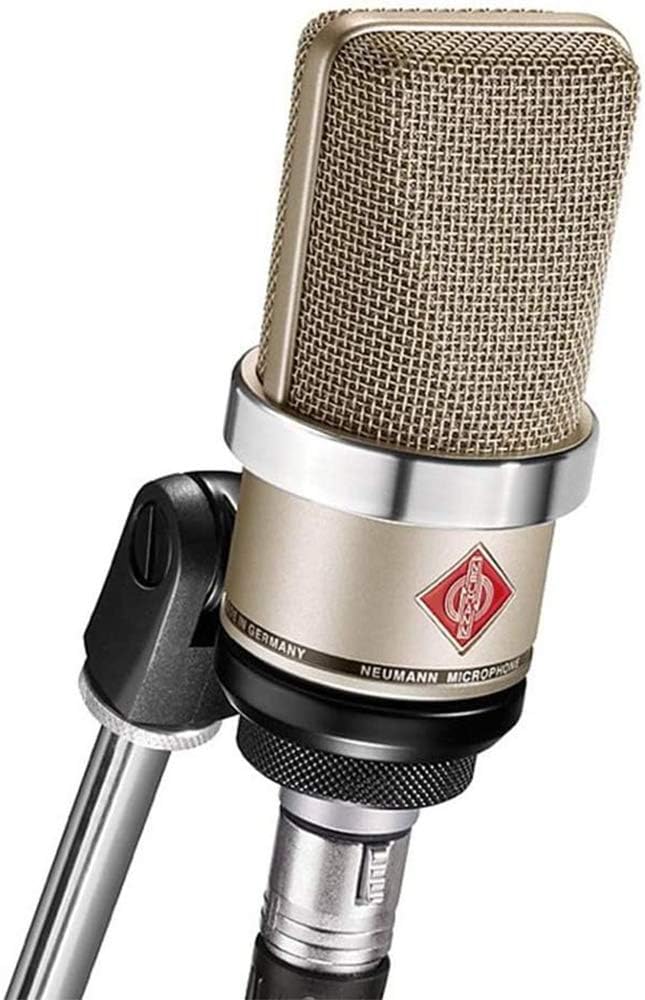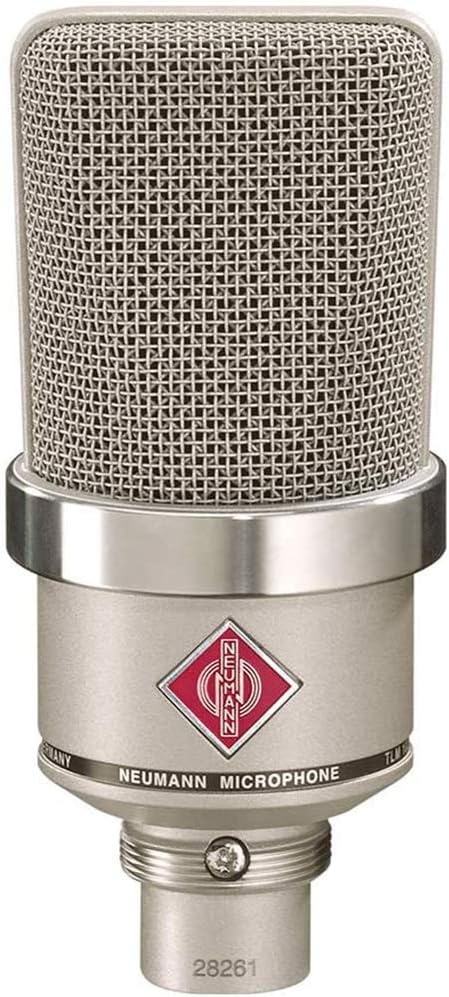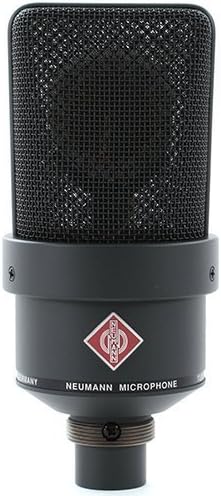Neumann TLM 102 vs 103
When it comes to professional studio microphones, Neumann is a name that commands respect. With decades of innovation and a reputation for pristine audio quality, Neumann microphones are staples in recording studios worldwide. Two of their most celebrated models in the modern era are the TLM 102 and TLM 103—both large-diaphragm condenser microphones designed for versatility and excellence. But how do they stack up against each other? In this review, we’ll explore their design, sound characteristics, technical specifications, applications, and value proposition to help you decide which one suits your needs best.
Neumann TLM 102 vs. TLM 103 Review

Neumann’s TLM (Transformerless Microphone) series represents a blend of classic design and modern engineering. By eliminating the output transformer found in vintage models like the U87, the TLM line achieves a cleaner signal path, lower noise, and a more transparent sound. The TLM 102 and TLM 103, while sharing this transformerless philosophy, cater to slightly different audiences due to their design and price points. The TLM 102 is often seen as the compact, budget-friendly option, while the TLM 103 is positioned as a workhorse with a nod to Neumann’s high-end heritage. Let’s dive into the details.
Design and Build Quality
TLM 102: Compact and Sleek

The Neumann TLM 102 is a striking microphone right out of the box. Measuring just 4.6 inches (116 mm) in length and weighing 210 grams, it’s noticeably smaller and lighter than most large-diaphragm condensers. Its compact size makes it ideal for tight studio spaces or mobile recording setups. The TLM 102 sports a minimalist design with a glossy nickel or matte black finish, exuding a modern aesthetic that feels both premium and understated.
The microphone’s grille is engineered to minimize pop sounds, and it lacks onboard switches for pads or filters—a deliberate choice to keep it simple and cost-effective. It comes with a basic stand mount, though many users opt for an optional shock mount (like the EA 4) to reduce handling noise. Build quality is, as expected from Neumann, impeccable, with a solid metal body that feels durable yet elegant.
TLM 103: The Classic Contender

In contrast, the TLM 103 is larger and more imposing, standing at 7.3 inches (185 mm) and weighing 450 grams. Its design echoes the iconic look of Neumann’s U87, with a wider grille and a more substantial presence. Available in nickel or matte black, the TLM 103 feels like a microphone built for permanence in a professional studio. Like the TLM 102, it skips onboard switches, relying on its straightforward cardioid polar pattern and transformerless circuitry to deliver consistent performance.
The TLM 103 also includes a swivel mount in the box, and its optional EA 1 shock mount is a popular upgrade for isolating vibrations. The build is robust, with a heft that inspires confidence in its longevity. While it’s not as portable as the TLM 102, its size and weight contribute to its reputation as a serious studio tool.
Design Verdict
The TLM 102 wins for portability and ease of use in smaller setups, while the TLM 103 feels like a flagship microphone designed to anchor a recording chain. Your choice may depend on whether you prioritize compactness or a traditional studio vibe.
Technical Specifications
TLM 102: The Essentials
- Capsule: Large-diaphragm K 102 capsule
- Polar Pattern: Cardioid
- Frequency Range: 20 Hz – 20 kHz
- Sensitivity: 11 mV/Pa
- Self-Noise: 12 dB-A
- Max SPL: 144 dB (0.5% THD)
- Impedance: 50 ohms
- Phantom Power: 48V
The TLM 102 uses a custom-designed capsule derived from Neumann’s higher-end models. Its cardioid pattern is tight and focused, with excellent off-axis rejection. The self-noise of 12 dB-A is impressively low for its price range, and its max SPL of 144 dB means it can handle loud sources like drums or guitar amps without distortion.
TLM 103: The Heavy Hitter
- Capsule: K 103 capsule (based on the U87’s K 87)
- Polar Pattern: Cardioid
- Frequency Range: 20 Hz – 20 kHz
- Sensitivity: 23 mV/Pa
- Self-Noise: 7 dB-A
- Max SPL: 138 dB (0.5% THD)
- Impedance: 50 ohms
- Phantom Power: 48V
The TLM 103’s K 103 capsule is a direct descendant of the legendary K 87 found in the U87, giving it a pedigree that’s hard to ignore. Its sensitivity is higher than the TLM 102’s, making it more responsive to subtle nuances. The self-noise of 7 dB-A is among the lowest in its class, ideal for capturing quiet sources like acoustic instruments or whispered vocals. However, its max SPL of 138 dB is slightly lower than the TLM 102’s, suggesting it’s less suited for extremely loud sources.
Specs Verdict
The TLM 103 edges out with lower self-noise and higher sensitivity, making it a better choice for delicate recordings. The TLM 102, however, handles louder sources with ease, offering a bit more headroom.
Sound Quality
TLM 102: Warmth with Clarity
The TLM 102 is often described as having a “big sound” despite its small size. It features a slight presence boost above 6 kHz, which adds air and detail to vocals and instruments without sounding harsh. The midrange is smooth and warm, while the low end is tight and controlled, though it doesn’t extend as deeply as some larger mics. This makes it particularly flattering on vocals, acoustic guitars, and even percussion, where its clarity shines.
Off-axis rejection is excellent, reducing room noise in less-than-ideal recording environments. However, its single cardioid pattern limits versatility compared to multi-pattern mics. The TLM 102’s sound signature leans toward a modern, polished tone—less colored than vintage Neumanns but still unmistakably high-quality.
TLM 103: The Neumann Signature
The TLM 103 delivers what many call the “Neumann sound”—a rich, detailed, and slightly larger-than-life character. Its presence boost (around 5-15 kHz) is broader and more pronounced than the TLM 102’s, giving vocals a glossy, professional sheen that’s perfect for pop, rock, and broadcast applications. The mids are full and authoritative, while the bass response is deeper and more extended, capturing the weight of instruments like double bass or kick drums.
With its ultra-low self-noise, the TLM 103 excels at picking up the finest details, making it a favorite for classical recordings, voiceovers, and studio vocals. However, its sensitivity can highlight imperfections in a recording chain, and its max SPL suggests caution with very loud sources unless paired with an external pad.
Sound Verdict
The TLM 102 offers a clean, modern sound with a touch of warmth, ideal for versatility and ease of use. The TLM 103, with its richer low end and pronounced presence, delivers a more classic Neumann tone suited for critical applications.
Applications
TLM 102: The All-Rounder
The TLM 102’s compact size and robust SPL handling make it a go-to for home studios and project setups. It’s fantastic for:
- Vocals: Adds clarity and polish to singers of all styles.
- Acoustic Guitar: Captures fingerpicking and strumming with detail.
- Drums: Handles overheads or close-miking snare and toms.
- Podcasting: Its pop resistance and focused pattern suit spoken word.
Its affordability and simplicity also make it a great entry point into the Neumann ecosystem for beginners or budget-conscious producers.
TLM 103: The Studio Staple
The TLM 103 is a professional-grade mic built for demanding environments. It shines in:
- Vocals: A favorite for lead vocals in pop, jazz, and classical genres.
- Voiceovers: Delivers broadcast-ready depth and clarity.
- Orchestral Recording: Low noise and rich tone suit strings and woodwinds.
- Piano: Captures the instrument’s full dynamic range.
It’s less forgiving than the TLM 102, requiring a quiet space and quality preamps to unlock its potential, but the results are world-class.
Application Verdict
The TLM 102 is the jack-of-all-trades, while the TLM 103 is the specialist for pristine, high-stakes recordings.
Price and Value
TLM 102: Affordable Excellence
Priced around $700-$800 (as of March 2025), the TLM 102 is one of Neumann’s most accessible microphones. For the money, you get a true Neumann experience—premium build, low noise, and a sound that punches above its weight. It’s an excellent value for home studios or anyone upgrading from budget condensers.
TLM 103: Premium Investment
The TLM 103 retails for $1,200-$1,300, positioning it as a mid-to-high-tier option. While it’s pricier, its pedigree, lower noise floor, and iconic sound justify the cost for professionals who need a reliable, top-tier mic. It’s an investment that pays off in critical listening environments.
Value Verdict
The TLM 102 offers unbeatable bang for the buck, while the TLM 103 is worth it if your budget and setup can support its potential.
Final Thoughts
Choosing between the Neumann TLM 102 and TLM 103 comes down to your needs, budget, and recording environment. The TLM 102 is a compact, versatile gem that delivers professional quality at an approachable price. It’s perfect for home studios, mobile setups, or anyone seeking a reliable all-purpose mic. The TLM 103, with its superior sensitivity, lower noise, and classic Neumann character, is the choice for seasoned engineers and studios aiming for perfection on vocals, instruments, and broadcast work.
Both microphones uphold Neumann’s legacy of excellence, but they cater to different users. If you’re starting out or need flexibility, the TLM 102 is a no-brainer. If you’re ready to invest in a flagship sound with unmatched detail, the TLM 103 beckons. Whichever you choose, you’re getting a tool that elevates your recordings to the next level.
